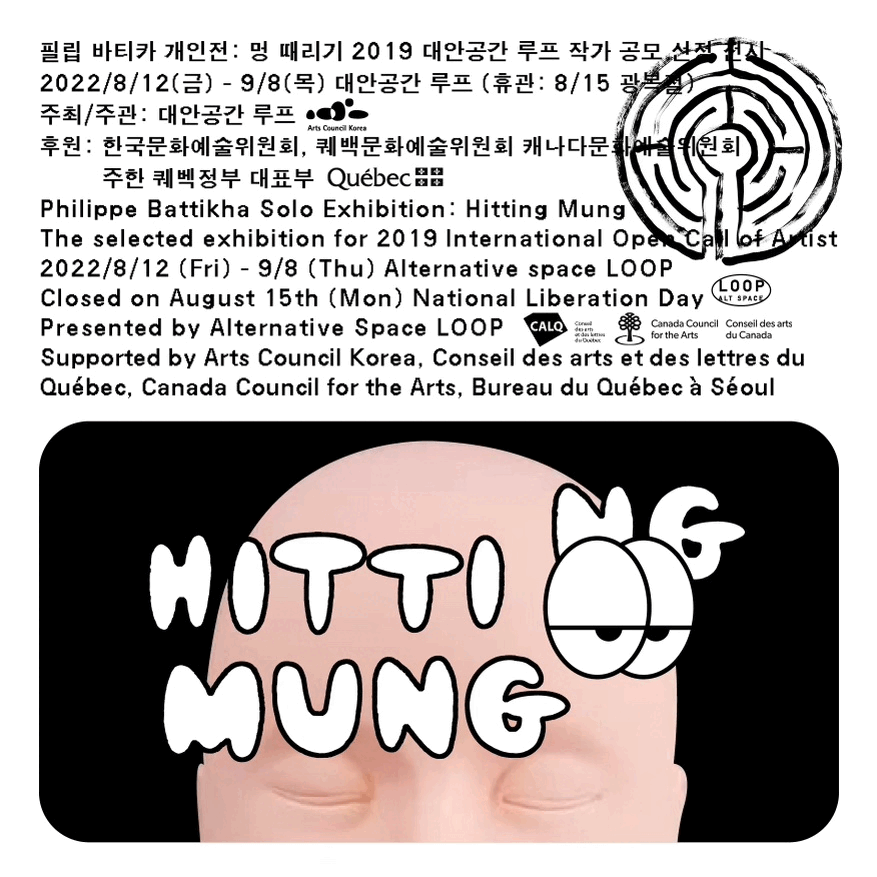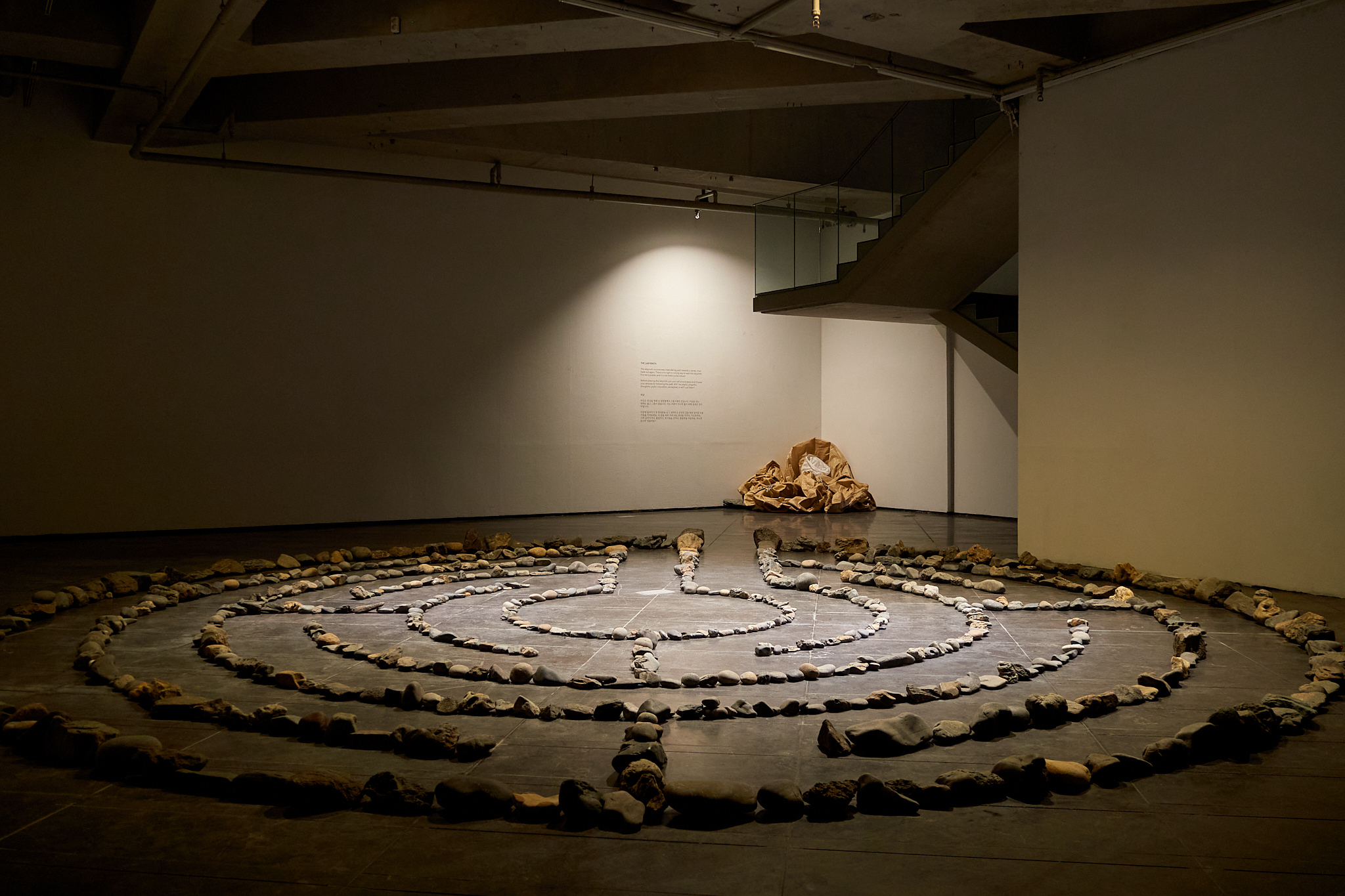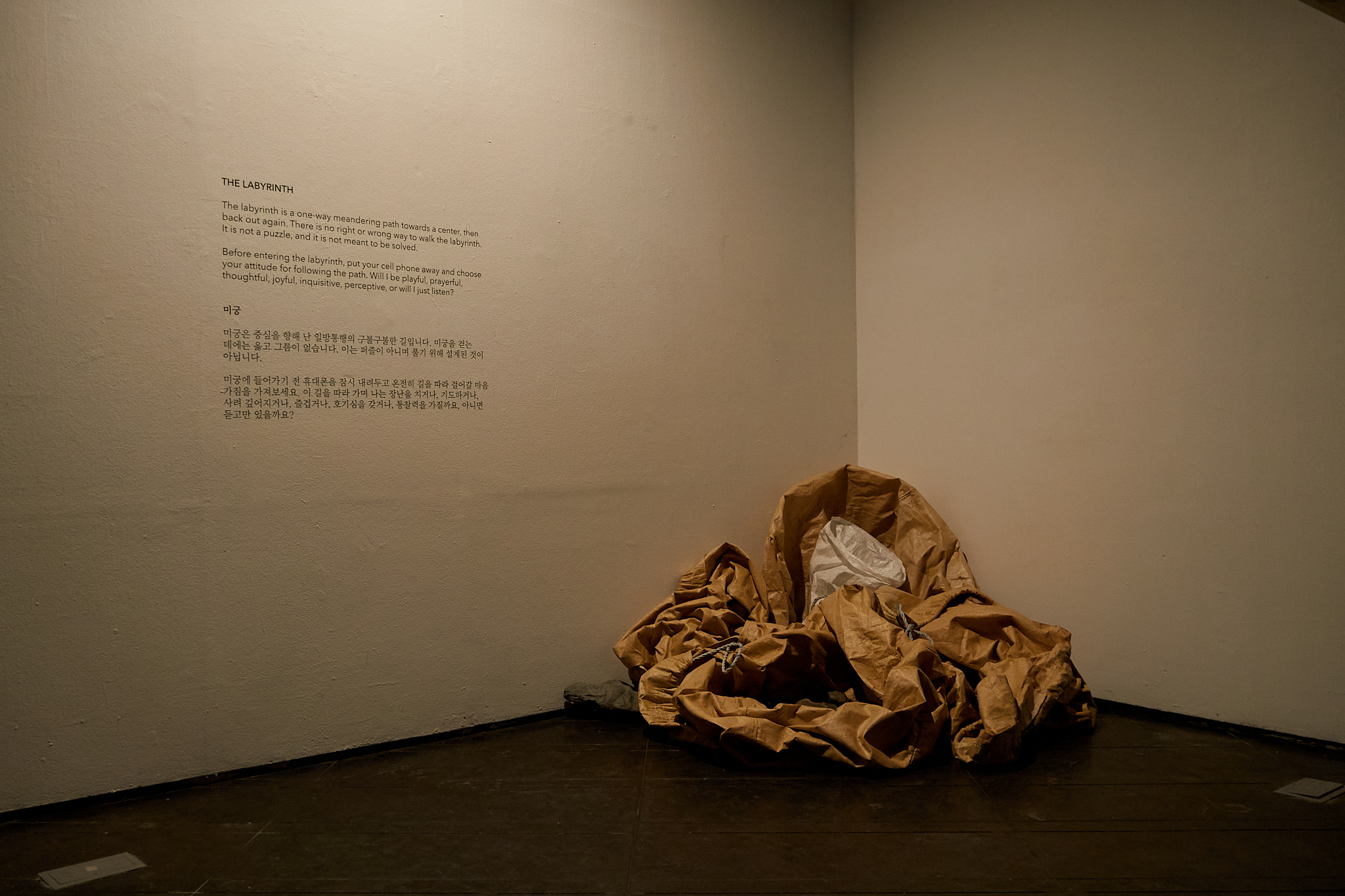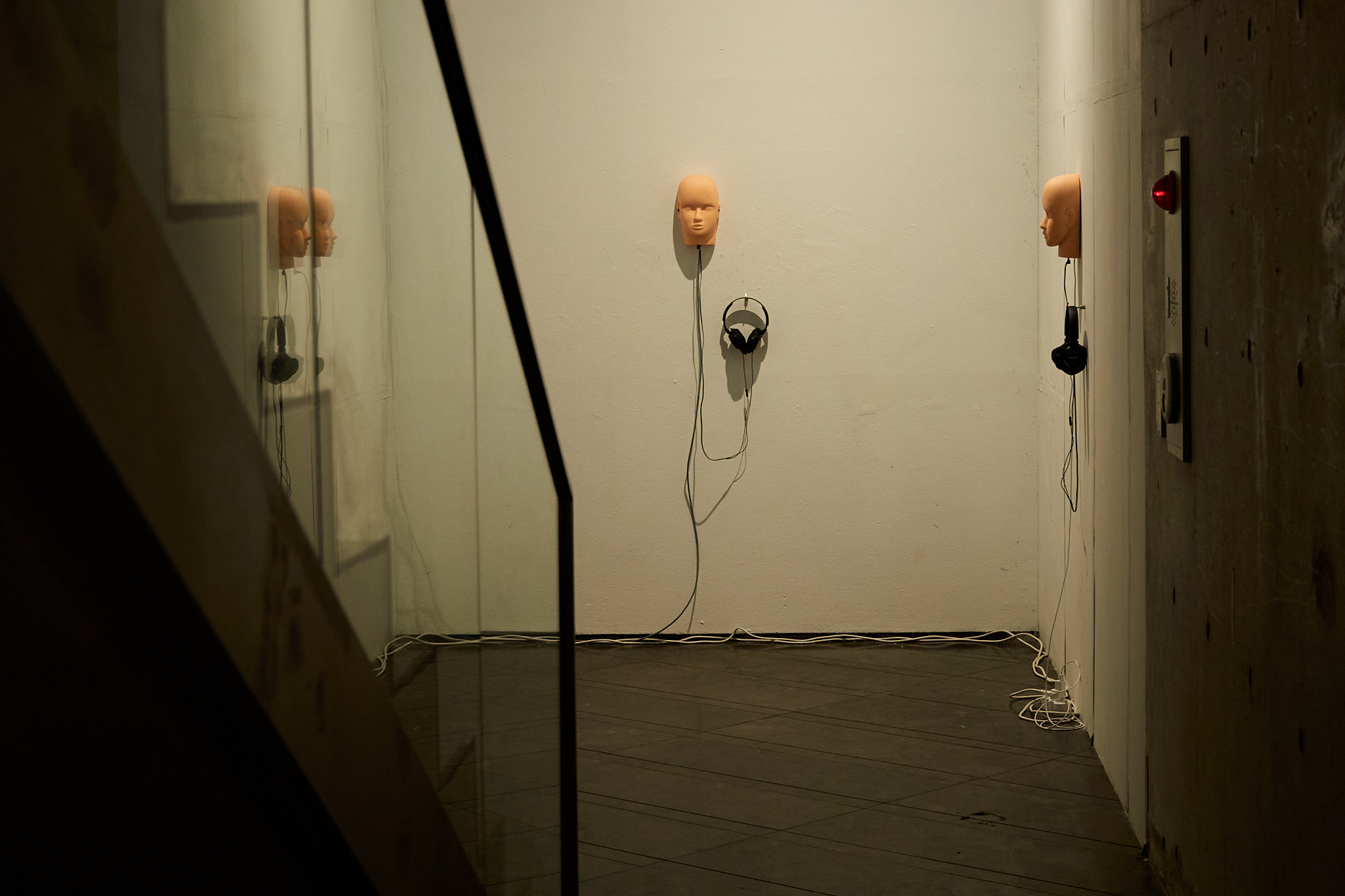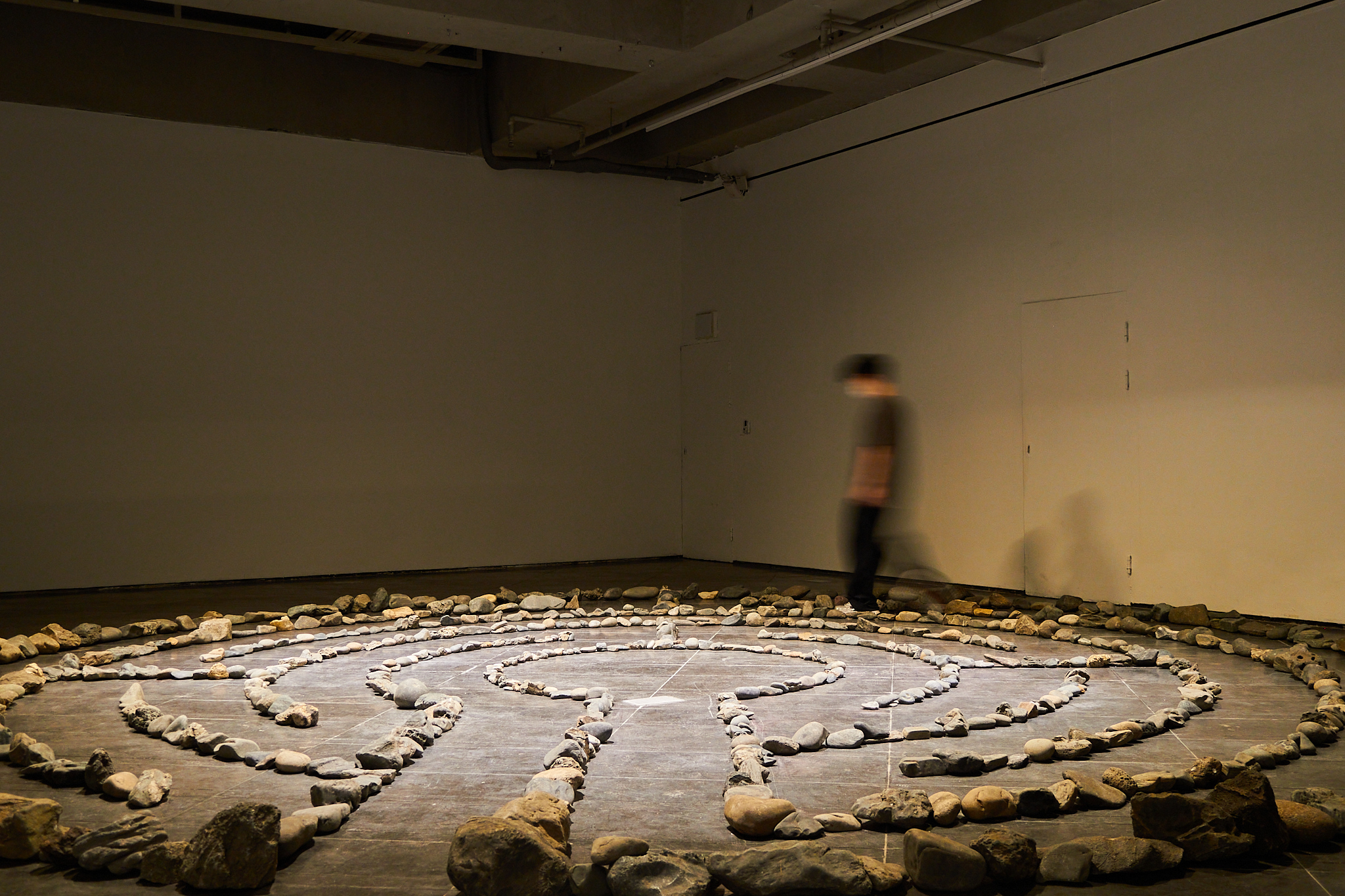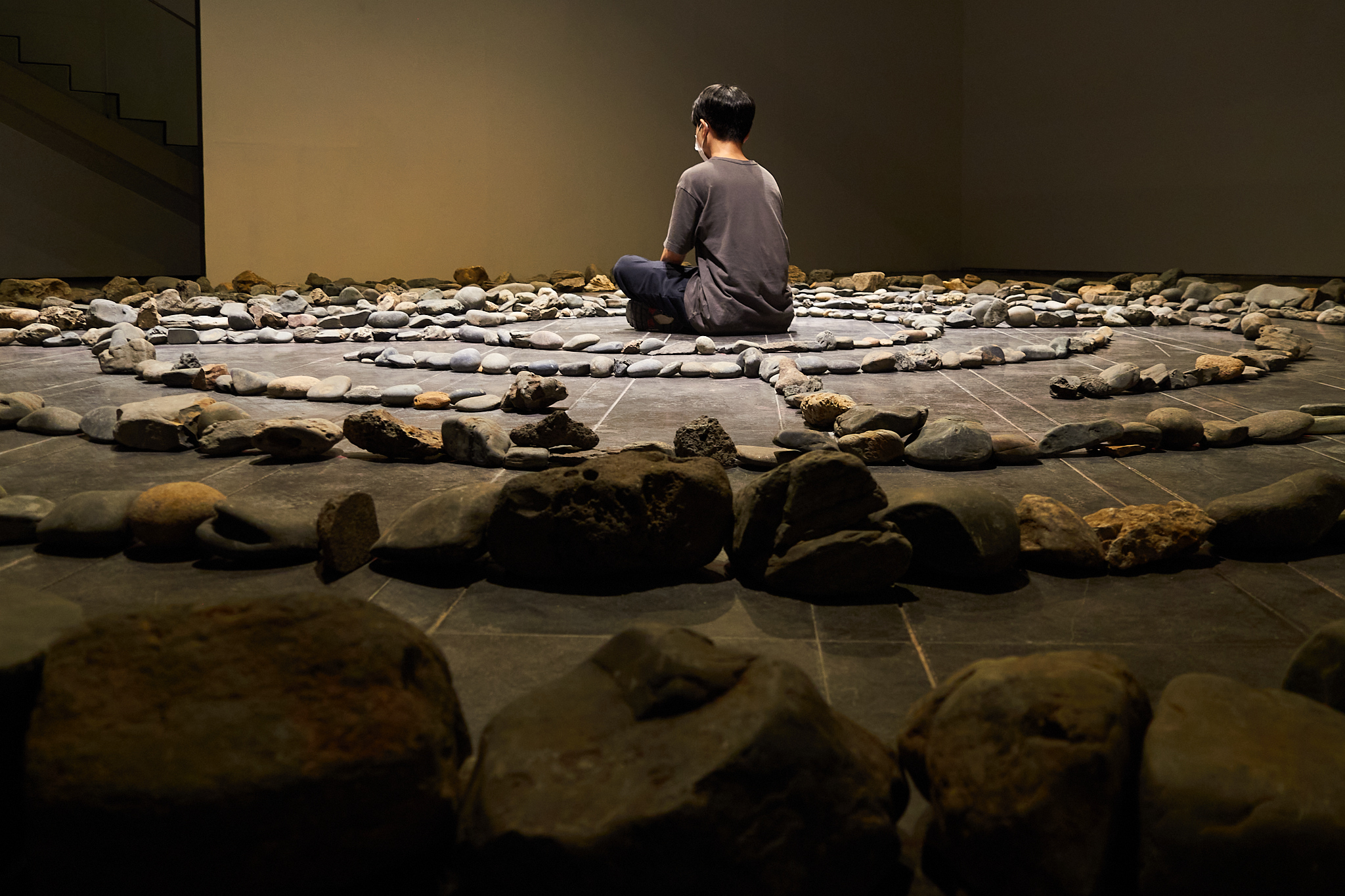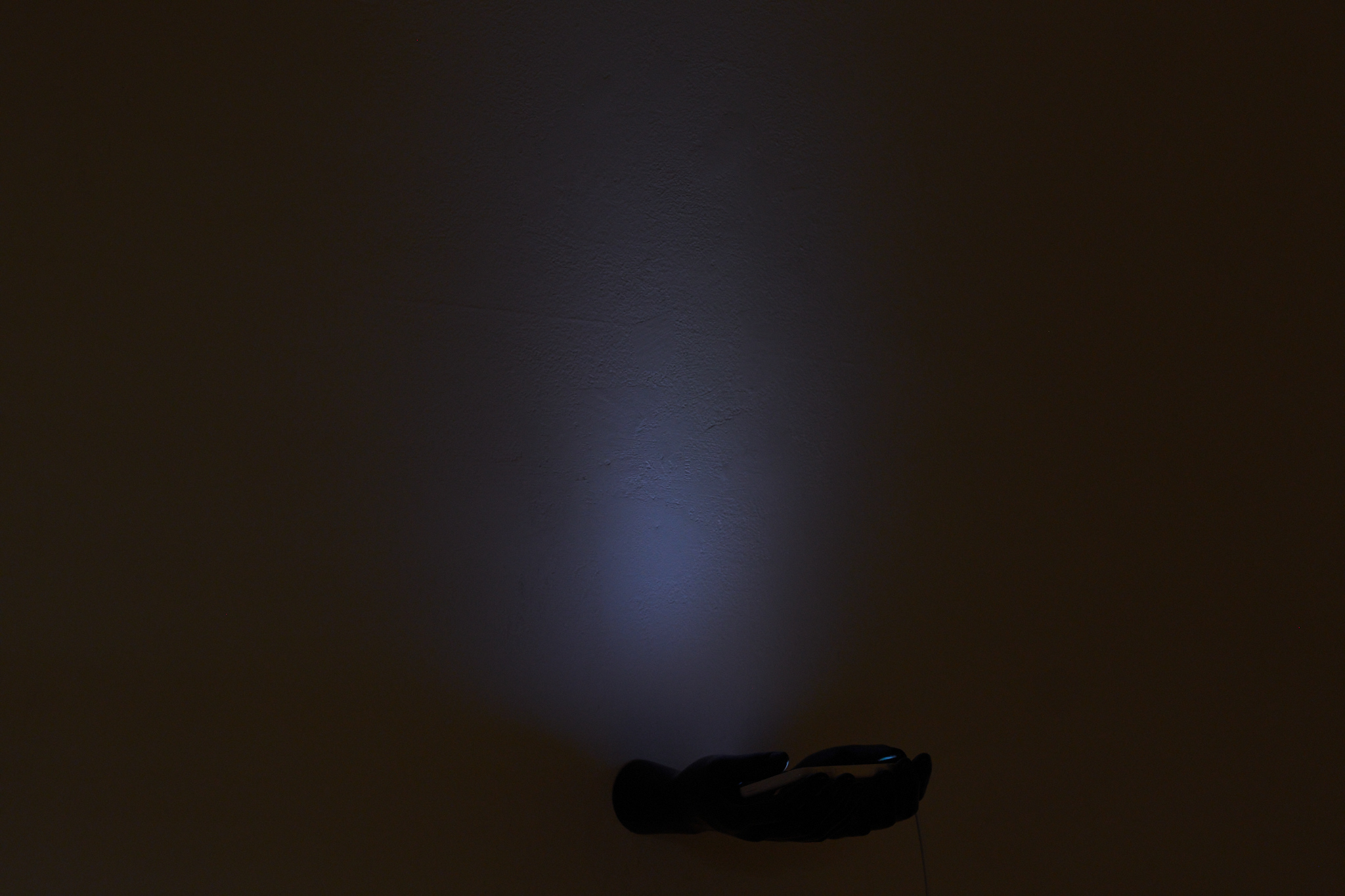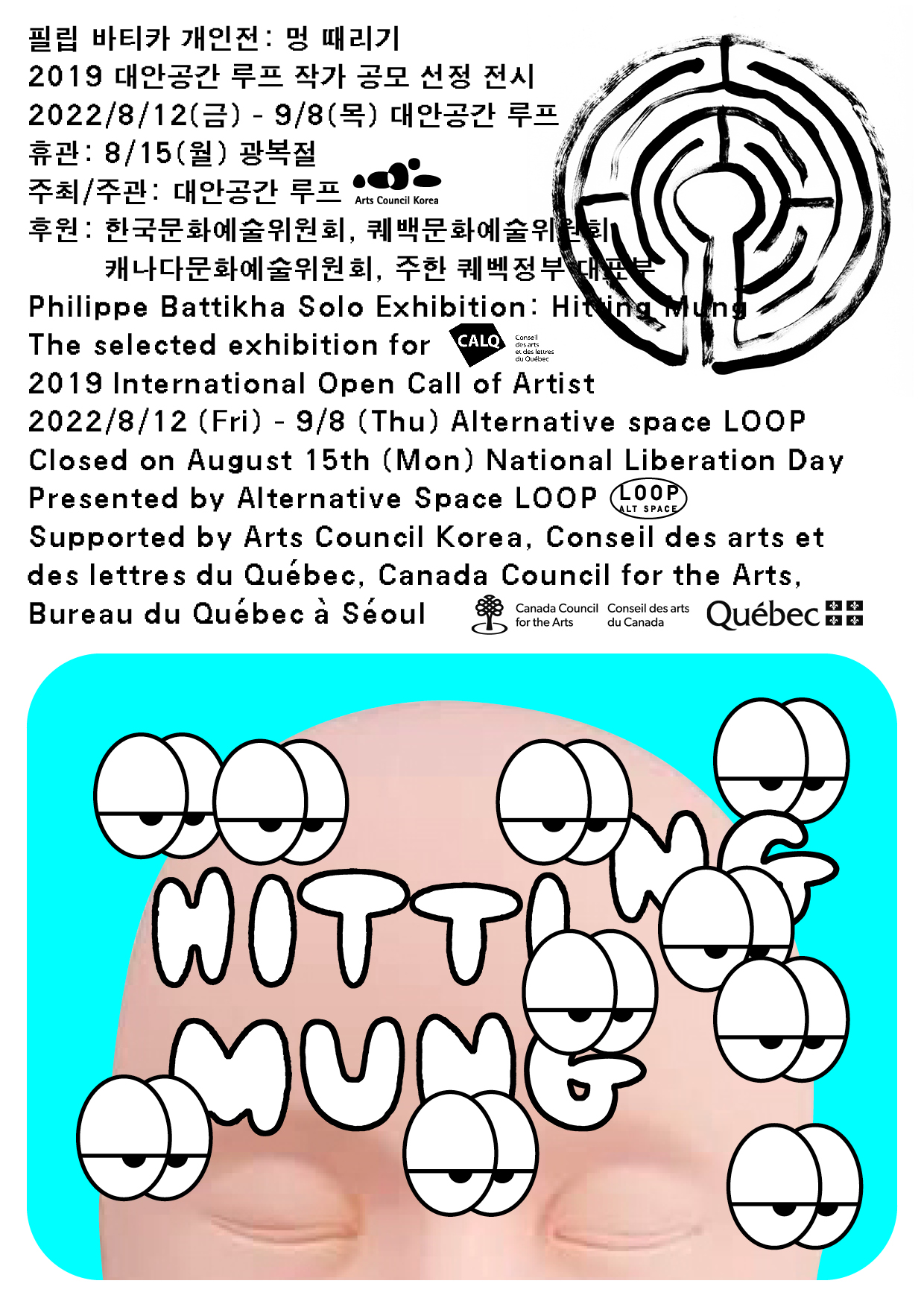In an age when every facet of our lives is appraised in terms of economic or commercial value, listening is undervalued. As Phillippe Battikha sees it, listening has become subsumed by images and popular music as a formulaic commodity. In Hitting Mung, a solo exhibition and participatory project that proposes listening at its center, Battikha invites us to consider the possible forms of consolation we might strive for in this moment.
Battikha, an artist based in Montreal, explores the impact auditory environments have on our lives. He admits his own awareness and interest were sparked relatively recently as he sought ‘environments for listening’ as an artist. In college, where he studied the trumpet, he recalled an experience he’d had in his teens while working at Car Toyz outside Washington, D.C., a job that entailed installing sound and alarm systems in vehicles. Remembering the sensation of closing the car doors and testing out the audio system, he realized how special those moments had been, how a relationship was created between him, the sound, and the space. Battikha went on experimenting with different ways of contextualizing this relationality between sound vibrations, vibrating matter, the surrounding environments, and personal experience, and exploring how these contributed to our senses.
The exhibition title comes from a cultural phenomenon in Korea dubbed hitting mung, the goal of which is to reach a void state, in other words to empty the mind of thought. People actively consume popular culture and its spaces to this end, heading to cafes, cinemas, concert venues, and camping sites. They gladly pay user fees to utilize these facilities in pursuit of ‘doing nothing’, then spend the duration of their ‘doing nothing’ time on their phones. Effectively there is no non-commercialized, absolute state of nothingness. Battikha’s exhibition ponders whether ‘doing nothing’ in its commercialized, capitalist iteration in fact consoles and offers rest and respite.
The participatory works on show invite active thinking on the part of the viewers as a response to personal reflection. On the first floor of the gallery, there are smartphone screen playing various images of peaceful landscapes on a loop, the kind of backgrounds we tend to make use of to ‘hit mung’: weaving clouds, a running river, quiet forests. Downstairs, “Faces” play live ASMR sounds and poetic narration.
In the center of the space stands “Labyrinth,” a huge spiral passage made from rocks the artist collected in Korea. A maze of sorts that has been designed to calm and ground, this labyrinth differs from a maze in the sense that it allows people to walk on without coming up on false or dead ends. The intention is to encourage reflection through walking a single winding path and breaking from the habit of walking in a straight line from one point to the next. In the center of the labyrinth visitors are encouraged to become aware of themselves and the environment that surrounds them.
The evolution of capital and the digital through leaps and bounds has created a new world, and simultaneously commercialized everything and made us entirely dependent on devices. ASMR has become a profitable business for famous YouTubers in the guise of offering peace and equilibrium, and even the act of doing nothing for one’s own rest is forced on us as a service with a price tag. Battikha’s work encourages us to ask, through action and reflection, that is through the physical act of walking as well as the auditory experience we perform voluntarily, how individual leisure is turned into a commodity. Hitting Mung urges us to imagine, in an analog manner, how we might liberate ourselves from consumption, capital, materialism, and digital culture.
Text: Sun Mi Lee, Curator, Alternative Space Loop
Translated by Emily Yae Won Lee
Philippe Battikha(b. 1982-)
Philippe Battikha is a Montreal-based artist, musician, composer, and community organizer. At the heart of my practice lies an obsession with sound. Following in a tradition of sound-artists and composers such as Max Neuhaus and R. Murray Schafer, my work focuses on the belief that in today’s visually driven society we must pay closer attention to the impact and importance aural environments play in our lives. By recontextualizing habitual sounds and exposing specific aural properties in sound installations, sculptures, and controlled sound environments, I explore the relationships we have to the sounds that surround us, and their affect on our experiences. Using sound as a medium is also a way of raising the alarm on a growing cultural disregard for material waste inherent in consumer capitalism.

